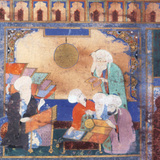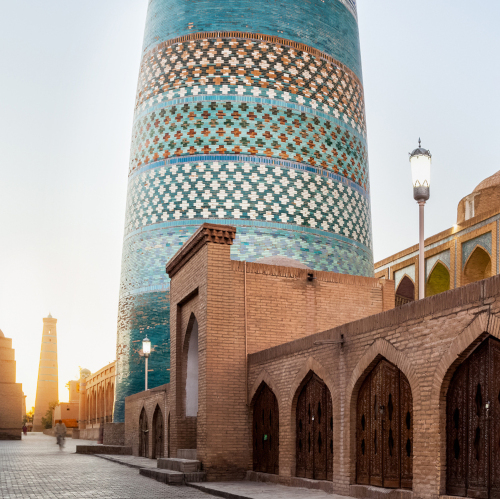Architecture refers to the art and technique of designing and building, and also to the finished product.
Islamic architecture throughout the Middle East and Central Asia is distinguished by its employment of mathematical precision in the name of balance and proportion. The design and construction of mosques, madrasas and other significant structures often incorporated symbolic elements. For example, the first mosque being the home of the prophet Mohammed, all mosques are designed to evoke the original. An open courtyard, high lectern and shaded arcades all harken back to the idea of the prophet's humble Arabian dwelling, however grand the scale envisioned. Central Asian architecture also made considerable use of tile work, an ideal material in the hot, arid climate. This also allowed and encouraged the use of considerable color in mosques, madrasas and other important buildings, something which continues to make these structures uniquely striking. The skilled employment of mathematical solutions to architectural planning allowed medieval Central Asians to construct the largest and most elaborate arches, domes and vaults of their day.
Scholars Who Studied Architecture
 al-Tusi
al-Tusi

